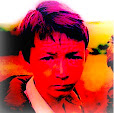Read A Vintage Article About Café BohemiaA June 13, 1956 Village Voice article describes the club’s origins as a jazz spot:
“First Birthday for Jazz Club That Started ‘by Accident’”What Jimmy Garofolo, 42, knew about progressive jazz one year ago wouldn’t have filled a single bar – of music. What he’s learned since, however, was filling his bar – the Cafe Bohemia – every night last week, when the nightspot celebrated its first anniversary as a jazz club.
Seating only 100, the tiny Barrow Street club has become the only place in America with a policy of “progressive jazz only.”
“No rock ‘n roll, no vocalists, no big bands, no nuttin’ except small jazz combos,” Garofolo told The Voice Sunday [June 10, 1956]. “Once Birdland and Basin Street were the mecca of all true jazzmen; now a lot of them won’t go on the road until they’ve played the Bohemia, too. We’re a small place and we’ve given many a new outfit their first chance.”
Half a dozen LP record albums have been cut on the premises during the past 12 months, and their covers, along with others, line the walls in symmetrical rows. They include covers by the Bohemia’s two current stars – Miles Davis and Teddy Charles.
The fact that the Bohemia ever turned into a jazz club in the first place is almost accidental. Owner Garofolo, a lifelong Villager who lives across the street from his bar, explains: “For six years I tried to make the place pay, first as a bar and restaurant, then with girly shows, and then with various acts. One night I had to throw out a character who’d been drinking brandy alexanders without any money to pay for them. The next thing I knew, he was back offering to play a few weeks here to pay off his obligation – and because he wanted a regular home base from which to play when he was between engagements.

Guess Who? “Somebody told me his name was Charlie Parker and he was a saxophonist. I was pretty naive about jazz at the time and I didn’t know him from beans, but it turned out he was a big man in the jazz world.
“When I put out signs announcing he was going to play, I had a stream of people coming in wanting to know if the great Charley Parker was going to play here. It was the way they said ‘here’ that got me.”
The great Charley Parker never did get around to playing the Bohemia; he died before his engagement came up. But his prestige had done the trick – jazzophiles have jammed the place ever since.
According to Panken’s 2005 Downbeat article, Charley Parker began frequenting the Bohemia because he was staying at the apartment of poet
Ted Joans, across the street. Joans is said to have coined “Bird lives!”, the phrase that caught on after Parker’s death in 1955. Joans also wrote the poem
“Jazz Is My Religion.”***
Now a local bar, this place used to be Cafe Bohemia. Cannonball Adderley made his New York debut here. He was 26 years old at the time, just left a job teaching high schools in Florida, and come to get his Masters degree at NYU. In his first night in New York, him and his brother, Nat Adderley, went down to Cafe Bohemia and played through a couple of tunes. Oscar Pettiford and Charlie Rouse were there that night, and were so impressed by the two brothers that they gave the them both jobs two nights later. The two would go on to record some of the most important jazz albums in history.
~ chasingred- TOUR OF NEW YORK'S JAZZ HISTORY, PART 1





















































